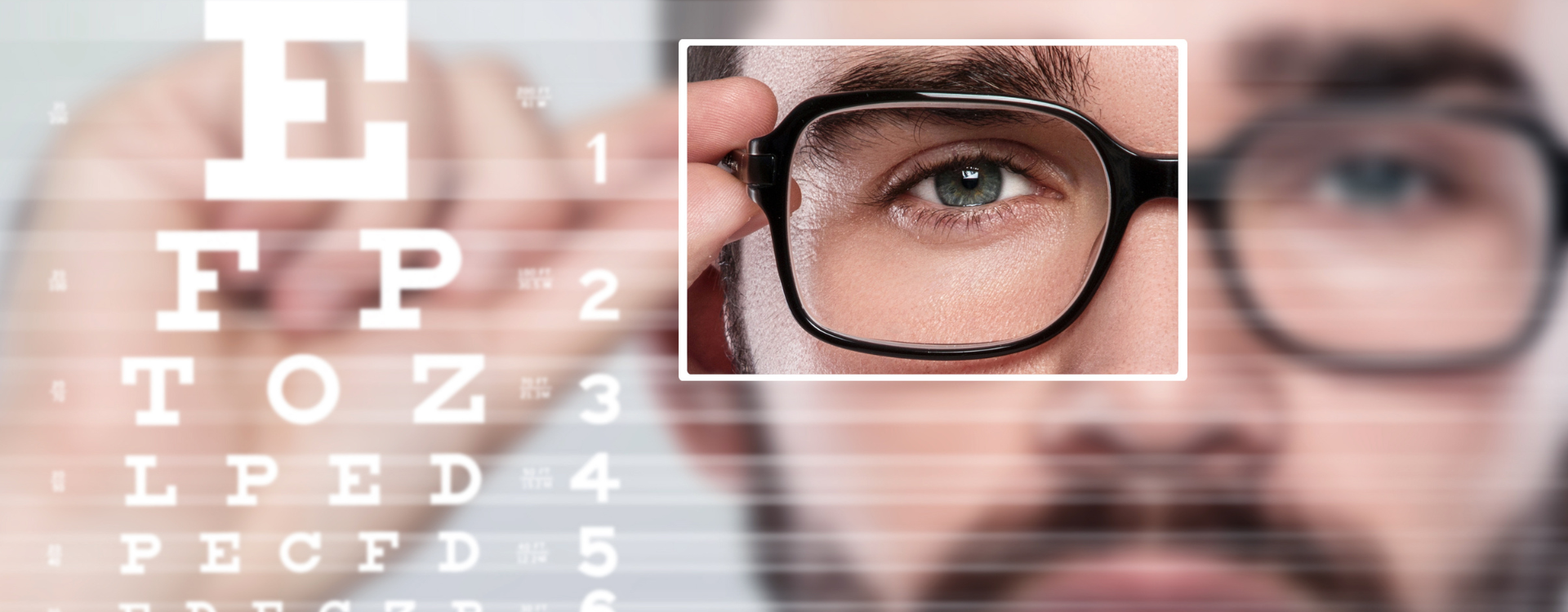Search in blog
Blog categories
Featured posts
-

-

Can we keep the frame and change the lenses ?
En lire plus -

Y2K Sunglasses: How the 2000s Style Is Back
En lire plus

After a consultation with an ophthalmologist, have you received a prescription for glasses to correct your vision? The next step is to choose the right lenses. Here is a comprehensive guide to help you understand the different types of corrective lenses available and make the best choice for your needs.
When we talk about lenses in optics, the term "glass" does not always refer to a glass material. Lenses can be made from different materials, each with its own advantages and disadvantages.
Mineral lenses, made from natural glass, were once very common but are now less widespread, mainly recommended for specific cases. They have high refractive indices, making them thin and resistant to scratches due to their hard surface. However, they are fragile and can break easily. Additionally, they are heavier than organic lenses.
Organic lenses, made from synthetic materials, are the most commonly used today. They have lower refractive indices than mineral lenses, so they are generally thicker. However, they offer great impact resistance, making them nearly unbreakable. They are lighter and more comfortable to wear, although their softer surface makes them more prone to scratches, which can be improved with specific treatments.
Polycarbonate lenses are part of the organic lens family but are primarily used for sports activities due to their robustness. They are ultra-resistant and unbreakable but have high sensitivity to scratches. Additionally, their unique refractive index makes them less suitable for severe ametropias.
Single vision lenses have the same power of correction across their entire surface. They correct vision at a specific distance, whether far, intermediate, or near. They can correct hyperopia, myopia, and astigmatism. Single vision lenses come in several types: Spherical, which correct myopia (concave) and hyperopia (convex); toric, which correct astigmatism with differences in power between two axes; and aspherical, which are thinner and lighter, ideal for significant corrections.
Bifocal lenses allow for both distant and near vision with two distinct correction zones. However, they do not offer intermediate vision and are less aesthetic than progressive lenses, explaining their decreasing use. Bifocal lenses are often prescribed for presbyopia or post-cataract surgery. They correct multiple refractive anomalies and offer clear vision at different distances. There are two types of bifocal lenses: progressive lenses and degressive lenses.
Progressive lenses consist of four distinct zones: the upper part for distance vision, the lower part for near vision, the central part for intermediate vision, with successive corrections for a smooth transition, and zones of optical aberrations on the edges. Progressive lenses are not recommended for patients with severe conditions like advanced AMD or those with binocular convergence difficulties.
Degressive lenses (or mid-distance lenses) correct near vision while offering sufficient depth of field for intermediate vision but do not correct distance vision. They are ideal for recent presbyopia correction or specific activities like computer work.
To help you choose, let's compare the different types of lenses in terms of cost, comfort, and durability. Mineral lenses, although thinner and more resistant to scratches, are heavier and more fragile. They are also more expensive than organic lenses. Conversely, organic lenses, although thicker and more prone to scratches without treatment, are lighter, more comfortable, and cheaper. They also offer better impact resistance. Polycarbonate lenses, while very impact-resistant and nearly unbreakable, tend to scratch easily and are less suitable for severe ametropias.
In terms of performance, single vision lenses are ideal for clear vision at a specific distance, while bifocal and multifocal lenses offer solutions for multiple vision distances. Progressive lenses are particularly suitable for people needing multiple corrections, but they require an adaptation period. Degressive lenses, or mid-distance lenses, are an excellent option for people who work a lot on computers or have specific intermediate vision needs.
Adapting to progressive lenses can take some time as they require a particular visual coordination. Patients may experience side effects like dizziness or blurry vision on the sides of the lens during the first few days. It is advisable to wear these lenses gradually to get used to the change. Conversely, single vision and bifocal lenses generally do not require this adaptation period.
Progressive lenses are often preferred for aesthetic reasons because they do not have a visible line separating the different correction zones, unlike bifocal lenses. Additionally, photochromic lenses offer extra comfort by automatically adjusting their tint according to the light, which is very practical for people frequently exposed to changes in brightness.
Solar lenses and photochromic lenses offer essential protection against harmful UV rays, which can cause long-term damage to your eyes. Solar protection categories range from 0 to 4, with filtration levels adapted to different light conditions.
Polarized lenses are particularly beneficial for outdoor activities and driving. They significantly reduce glare caused by light reflections on flat surfaces like water or snow. This is especially useful for athletes and frequent drivers, as it improves clarity and contrast, thus reducing eye strain.
Seecly is not only a marketplace for refurbished second-hand glasses but also a reference for visual quality with its different lens packs.
Whether it's the Eco-Luxe Single Vision Pack at €79, offering hardened, anti-reflective, and blue light blocking lenses for optimal visual comfort, or the Eco-Prestige Single Vision Pack at €109, which adds a thinning treatment for thinner and more aesthetic lenses, Seecly meets all your needs. And for outdoor enthusiasts, the Eco-Chic Solar Lens Pack at €39 offers essential Cat 3 UV 100% protection for your activities in the sun.
Contact us at 07 49 39 96 77 or by email at [email protected], an optician will be available to help you get a personalized quote.
Leave a comment